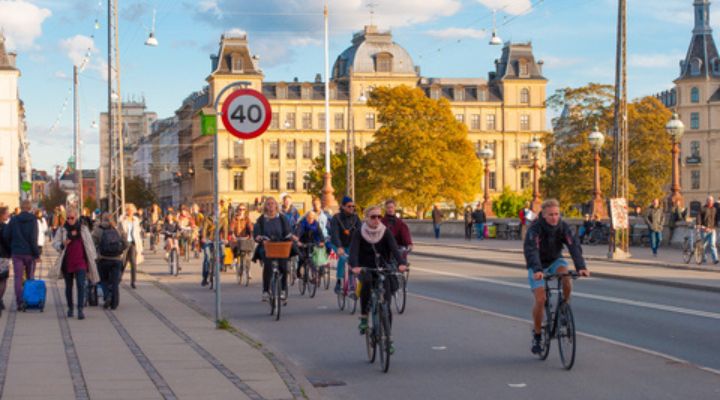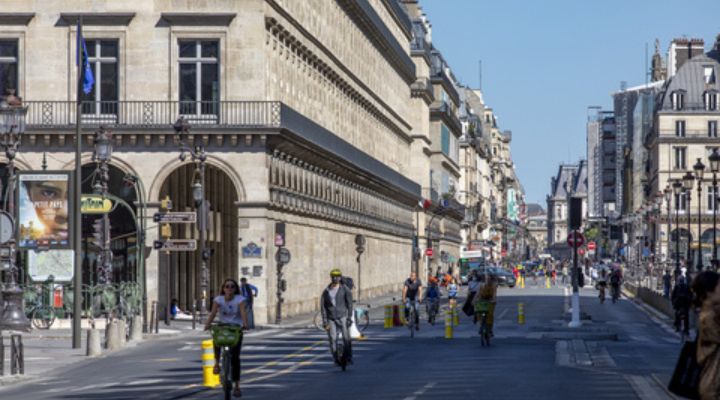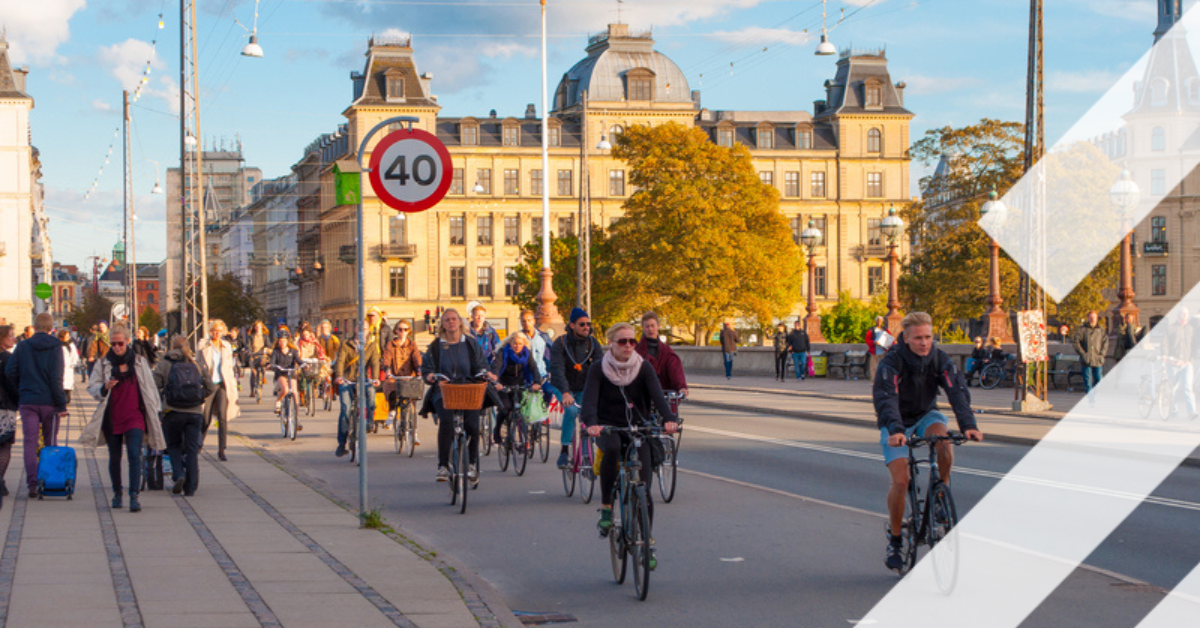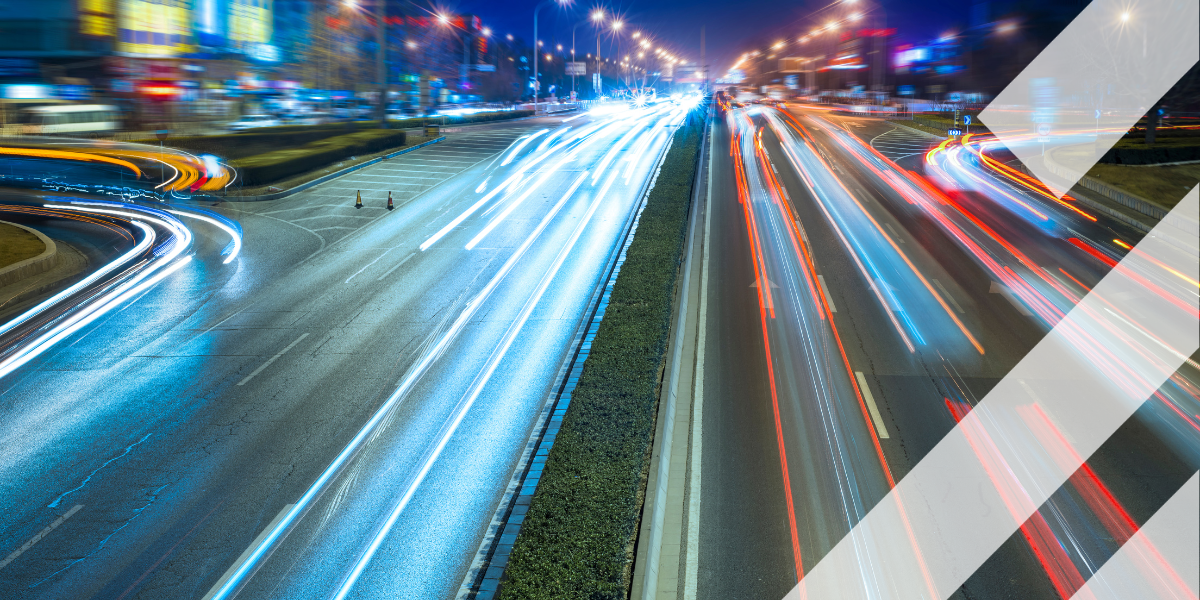Loading component...
Is this the end of the Car-Centric City?
Making more space for cyclists in cities is obviously a great idea. Everyone can see the benefit of it, but what are the practicalities, in terms of the effects on the environment, on the whole city’s ecosystem, and also in terms of changes to traffic patterns?
Well, first of all, what I would say about this European Declaration on Cycling is it's an extremely welcome development. It's the most ambitious statement the European Commission has ever come up with on cycling, and it should be seen in the context of other important developments, such as the European Parliament's resolution earlier this year, and a Member State-led initiative that 16 countries have signed on to, calling for a more strategic approach to cycling. I would encourage everyone to read the Declaration because it is a very readable document that makes a lot of sense. It starts off by saying how transport is key for social inclusion and economic development and creating jobs and promoting access to essential services, employments, etc, while noting that transport is still a significant source of greenhouse gas emissions, noise, air pollution, and so on.
What effect will implementing some of the Declaration’s directives have on congestion?
Clearly, congestion remains a serious challenge to the efficiency of transport systems. Elevating cycling to the level it deserves, as a fully fledged mode of transport, will give people more mobility choices and the practical implementation of the Declaration will make cycling a more viable choice. I think that you will have a shift of a lot of trips currently taken by motorised vehicle to cycling, and that will reduce overall congestion. This is something that drivers of motorised vehicles should actually be happy about, because it will get more of that traffic off the road.

In 2022 Intertraffic spoke with a representative from the city of Glasgow who explained how some of the temporary cycling-oriented changes that had been made at the height of the COVID-19 pandemic had been made into permanent measures. Do you think that the some of those measures introduced for COVID have actually had a positive impact on how cities (and the European Commission) are thinking about active travel?
I certainly think it's been an extreme accelerator, because it has helped people visualise these mobility choices much better as they experienced them during COVID. ‘I can have a healthier, more sustainable way to get to where I need to go or just for leisure’. We know that the single biggest reason people give for why they don't cycle or don't cycle more or don't allow their children to cycle is the lack of safe cycling infrastructure. When you provide that with pop-up lanes, changing traffic patterns, however you do it, you will get more cyclists, just like if you build more roads for cars, you probably will get more cars. This way, you shift the mobility mix into something that's more sustainable and healthy and inclusive.
How are cities going to implement these schemes, though? In European cities space is at a premium – there are hundreds of beautiful, historic cities with narrow streets and picturesque squares and plazas so where is this devoted space going to come from? Where does the displaced traffic go?
I think we're already seeing this transformation happening - look at cities like Paris or Brussels. These are cities that, even before the pandemic, had started developing and implementing plans to transform their cities into places that are much more friendly for cycling, and active mobility. The pandemic allowed them to accelerate this. In Brussels on the busy thoroughfare Rue de la Loi, where there were four lanes of car traffic, the city turned one of those lanes into a two-lane cyclepath. The Minister for Mobility in Brussels, Elke Van den Brandt, has said that the amount of public space in Brussels devoted to cars, whether moving or parked, is 70%, and that they are in the process of transforming that balance, that allocation of public space.
So that is one way it's going to get done in cities. But again, when you open up this mobility choice for so many more people, then you will get a modal shift. Around 60% of urban trips currently are shorter than five kilometres. That's a distance that's eminently cyclable. And if you factor in e-bikes, which give people longer cycling ranges, you have an even bigger potential for shifting these trips. I think the reallocation of space and the building of dedicated infrastructure, is going to accelerate that trend. It’s going to make for a better balance and a better experience for users .

Earlier you mentioned how dedicated cycling infrastructure will beneficial to the local economy. Can you expend a bit more about how that would work?
When you open up cycling to more people, you give more people access to job opportunities, for example. There are things in this Declaration that also are meant to support the potential of the cycling industry and the enormous potential that it has to grow further, and naturally you will see an economic benefit there, too. There's also the aspect that the electrification of vehicles is changing the skillsets that are needed, and it's displacing workers with perhaps more traditional skillsets. The cycling industry can absorb some of those workers. Also, a common myth is that if you take away car parking spaces, or pedestrianize certain streets or build cycle lanes then local businesses will be less frequented. We’ve all heard that, but study after study has shown that it's not true. In fact, the opposite happens. You get more local people shopping locally, spending more in local businesses, and it actually provides an excellent boost to the economy.
What would you say are some of the societal benefits of devoted cycling infrastructure in cities? There can’t be any downsides to a fitter, more active population living in a less polluted and less congested city…
Beyond the benefit of greater social inclusion? To improve public health more generally, and people's individual health specifically. More active people means more people meeting the WHO guidelines of 30 minutes of physical activity a day. For those for whom car ownership is not viable, more cycling can mean increased access to job opportunities, to places of social and cultural benefit, and so on. The liveability of cities is also high on the agenda - people love living in cities with big pedestrian zones as they are just pleasant places to live.
Drivers, however, are infamously resistant to change.
People are naturally a bit risk averse or, as you say, resistant to change, so it can be a challenge to show and convince people abour what else it could it look like. That's why the pandemic was such an accelerator because it showed us, all of a sudden, that it doesn't have to look like traffic gridlock. It can also look like a very nice and pleasant empty street with a cycle lane.
Artist's impressions of the city of the future from the turn of the century look more like what we’re talking about now: pedestrianized zones, healthy trees because there’s less pollution, less cars on the street...
Exactly that, and I think you can add more children on the street, because their parents can give them more freedom in a range of motion, which is fantastic for parents who otherwise would have been way too afraid to allow their children to cycle to school. There's studies that show that children who live in the Netherlands are the happiest in the world and this is partly due to the freedom that they have. They can enjoy that independence that the protected bike lanes you find in all Dutch cities give them.
It's very refreshing to see that the European Commission has elevated cycling to a strategic priority in this Declaration. This is truly groundbreaking.



